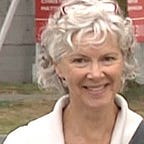Whose Land Is This? Stewardship over Ownership
At the beginning of every event in the coFood Collaborative Garden, we acknowledge that we gather, work and play on the traditional, ancestral and unceded territories of the Coast Salish peoples: namely the Musqueam, Squamish and Tsleil-Waututh nations. In terms of time, we are interlopers here. Our tenure is less than 200 years. Indigenous peoples have populated these lands for more than 100 centuries.
“The wave of exploration hundreds of years ago brought a very different world- view to new lands — North and South America, Africa, Australia — based on a search for opportunity, resources, wealth. There was no respect for flora and fauna except as potential for riches, and certainly no respect for the indigenous people and their cultures.” ~David Suzuki
When the railroad arrived, it changed everything. Colonial interests were eager to reap the profits that could be had from BC’s abundant natural resources.
Private property and its commodification is a concept that the traditional Peoples of this land did not practice. Is our current land ownership system anything other than the practice of dividing up something that was once a whole ecosystem into separate parcels and bundles of ownership “rights”, defying Nature at every turn in order to extract profit from what once belonged to and supported the well-being of everyone who lived here? This attitude is the direct opposite of the Indigenous perspective.
Last year, I listened to a talk by Indigenous filmmaker Trevor Mack, of the Tŝilhqot’in Nation in the Cariboo region of west central BC. He spoke of how his people see the lakes rivers and mountains of their traditional lands. He said “ this is our ‘Vatican’”. In other words this land, and all its inhabitants, past and future, is felt to be “sacred”.
The concept of “All My Relations” is the mindset that “reflects people who are aware that everything in the universe is connected. It also reinforces that everyone and everything has a purpose, is worthy of respect and caring, and has a place in the grand scheme of life.” We must find the humility to learn from the peoples who have stewarded these lands for centuries before our European ancestors claimed “ownership” by force to satisfy an insatiable hunger for the abundant natural “resources” they “discovered”, and which are now quickly running out due to that greed. Clear-cutting, mega dams, fossil fuel extraction, mining, over-fishing and visions of endless economic growth are destroying the planet. We have become “rich” off the back of the land. Business as usual cannot continue or we will destroy that which gives us life.
There is much healing to be done to address the wrongs of the colonial past we have inherited. The first step is awareness of the true history of this place. I have realized that almost everything I was taught in history class was strongly biased in favor of colonial interests and the supremacy of the European way of life.
It is our responsibility to re-educate ourselves. Ironically, it is by turning to our Indigenous friends that we can learn how to live lightly on Mother Earth and perhaps find a way through our collective predicament. They are more than willing to teach us, an attitude of generosity that belies the havoc wreaked on their people at the hands of our European ancestors.
One initiative in our neighborhood, the Resurfacing History Project, is creating opportunities for Indigenous and non- Indigenous neighbors (settlers) to learn more about the land we inhabit together and to educate on and help preserve the culture and traditions.
Historically, we know that where there is now a densely populated urban neighborhood, there once grew cedar, crab apple and hemlock in abundance. Brewery Creek, one among many waterways in East Vancouver that flowed downhill to the ocean, has been buried in an underground concrete culvert just steps from our garden, and paved over by streets and buildings. There are only a couple of “landscape design features” here and there that indicate where the water once flowed.
Recently the coFood Vancouver team hosted a workshop in the garden to educate us about native plants and how they have traditionally been used for teas and medicines. With some grant funding, we had acquired a varied selection of plants that once grew here: salal, bunchberry, thimbleberry, dune willow, mock orange, Nootka rose and more. . . and the workshop involved not only learning about the healing properties of the plants and how to identify them, but paid tribute to the plants as living beings that teach us when we learn to observe , listen and receive the plant wisdom. Colorful signs were painted and installed as identifiers around the garden so visitors might be made aware of them.
I am now beginning to feel the full import of the ways colonialism laid waste to the planet- feel it in my gut- not just as a revision of history but a change of heart.
This nascent understanding has influenced how we see our tenure in the garden. It sets up a conflict between collective stewardship of the land and ownership for profit. Legally, I “own” the lot that makes up the western half of the garden. The other half is the legal “property” of someone else, who purchased it from the previous legal owner. If we are entrusted with stewardship of the land how does that impact our decisions? What is the moral imperative that should come with ownership?
A major issue we are facing is the likelihood that the neighbour’s lot will be developed in the coming year, which will necessitate big changes to what we are able to grow and how we can best utilize the space to co-create resilient community.
If we emulated our indigenous neighbours how would we think about stewarding the land to promote healing and regeneration?
